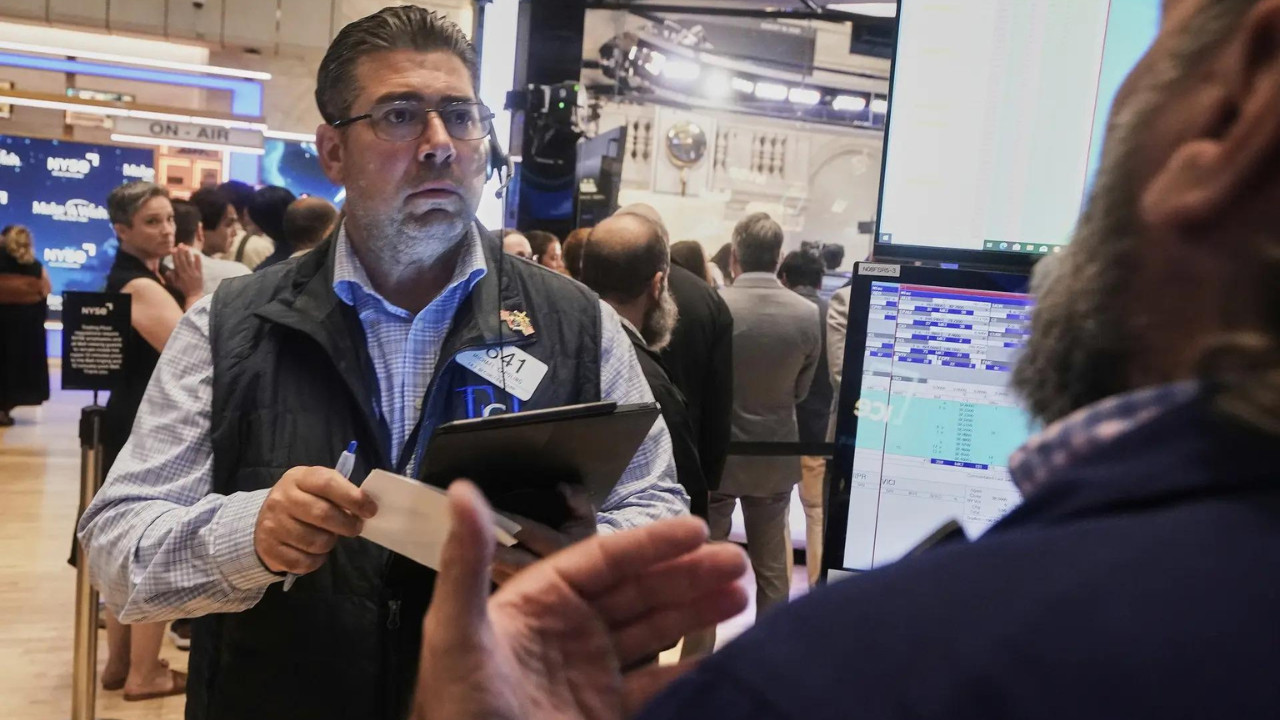US stocks experienced another decline on Thursday, with the S&P 500, Dow, and Nasdaq all posting losses. Walmart’s disappointing profit forecast significantly impacted the market. Investors are also reassessing Big Tech valuations amid artificial intelligence enthusiasm. Meanwhile, Coty’s quarterly loss surprised Wall Street, while Nordson exceeded expectations.
The Market Wobbles: What’s Behind Wall Street’s Unease?
Wall Street took a tumble yesterday, leaving investors feeling a bit like they’d missed a step on the stairs. The S&P 500 edged closer to its fifth consecutive day of losses, a streak that’s understandably making headlines. The Dow Jones Industrial Average and the Nasdaq Composite followed suit, painting a picture of widespread hesitancy. But what’s really going on? Is this a minor blip or a sign of something bigger brewing?
One significant drag on the market came from retail giant Walmart. The company’s shares dipped, pulling down the consumer discretionary sector with them. This decline hints at potential concerns about consumer spending, a crucial engine for the US economy. Are shoppers tightening their belts, bracing for tougher times ahead? It’s a question market watchers are keenly focused on.

Beyond retail anxieties, all eyes are on Jerome Powell and the Federal Reserve. The market is hanging on every word, desperately seeking clues about the future of interest rates. The Fed’s decisions have a powerful ripple effect, influencing everything from borrowing costs to corporate investments. Any indication of further rate hikes sends shivers down Wall Street’s spine, while signals of a potential pause can offer a much-needed dose of optimism.
The Power of Powell: Decoding the Fed’s Next Move
Powell’s upcoming speech is being treated like a vital economic weather forecast. Investors are eager to decipher his message, searching for nuances that might reveal the Fed’s thinking on inflation and economic growth. The delicate balancing act the Fed is attempting – cooling inflation without triggering a recession – is no easy feat.
Adding to the complexity, economic data continues to send mixed signals. We’re seeing resilience in some sectors, while others are showing signs of strain. This creates a challenging environment for the Fed, making it even more crucial to communicate its intentions clearly and avoid any unexpected surprises. A misstep could easily send the market into a steeper decline.
Navigating the Shifting Sands of the Stock Market
The current market environment demands a cautious approach. The volatility we’re witnessing underscores the importance of diversification and a long-term investment strategy. Reacting impulsively to daily market fluctuations can be a recipe for disaster. Instead, focusing on fundamentally sound companies and sectors that are well-positioned for future growth is a more prudent approach.
Considering alternative investments might also be wise. As traditional stock markets grapple with uncertainty, assets like bonds or real estate can offer a degree of stability and potentially mitigate risk. Remember, a well-rounded portfolio is your best defense against market turbulence.
Staying informed and seeking professional financial advice are also crucial steps. The economic landscape is constantly evolving, and understanding the potential impact of various factors on your investments is essential. Don’t hesitate to consult with a financial advisor who can help you navigate these complex times and make informed decisions that align with your individual goals and risk tolerance. You can read more about building a diverse investment portfolio here.
The Road Ahead for Wall Street and Investors
While the recent market downturn is concerning, it’s important to remember that corrections are a normal part of the economic cycle. They can even present opportunities for astute investors to buy quality assets at discounted prices. However, navigating these choppy waters requires a clear understanding of the underlying risks and a well-thought-out investment plan.
The market’s future hinges on several key factors, including the Fed’s monetary policy decisions, the strength of the US economy, and the trajectory of inflation. While predicting the future with certainty is impossible, closely monitoring these indicators and adapting your investment strategy accordingly will be crucial for success. Wall Street’s current unease serves as a reminder that vigilance and a long-term perspective are essential for weathering any storm. The key takeaway? Don’t panic, stay informed, and remain focused on your financial goals.







